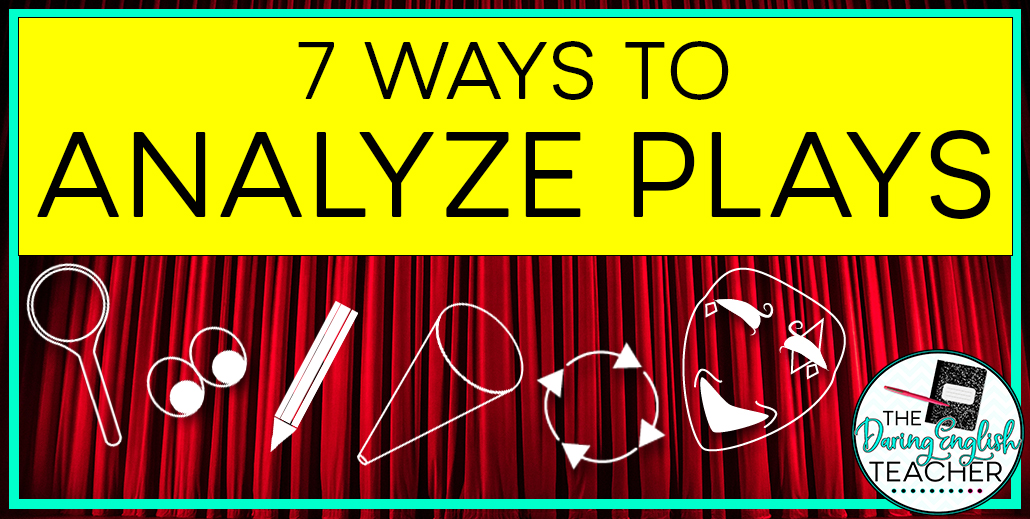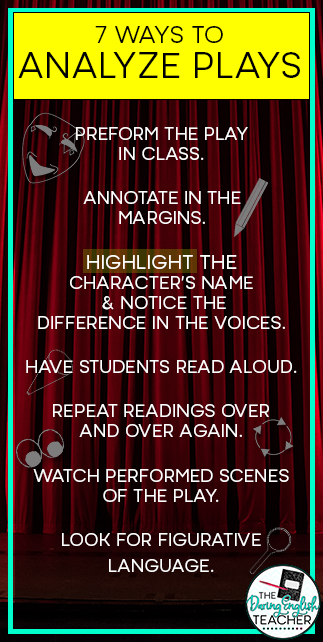Incorporating drama is an enriching way to analyze text in your English classes. Sometimes it can be difficult for students to get a full grasp on these engaging plays, but once they realize that these works of literature are meant to be performed on stage in front of the audience, students start to see them in new ways. Plays are very common to study, yet there can be stumbling blocks in the full analysis of them. Here are seven different ways to teach your students how to analyze plays in the classroom and elsewhere:
Perform the plays in class
This may be the approach most classes take in studying plays, but this is because performing the play, or even small scenes from they play, really helps students gain a better understanding. Simply reading the lines out loud and finding the different characters’ emotions as they act, will ultimately help students understand exactly what the story is about and what they should learn from it. It can also be a lot of fun for students to engage in this way because it is something new and not their everyday sitting and reading in an English class activity.
Annotate in the margins
Annotating the play will allow your students to take some notes on specific details including literary devices and important events that they notice. Note-taking helps a student to think about what they are reading, and assigning this allows them to know that their thoughts actually matter. To help students learn how to annotate fiction, I like to take a step-by-step approach to teaching annotation.
Highlight the character’s names and notice the difference in the voices
Plays have the benefit of specifying when characters speak and there is always a clear distinction between their voices, not just through the separation of text. By having your students look specifically at each character and highlighting when he or she speaks, they will be able to grasp the workings of characterization and what goes into making a character. You can also use this to help determine who has the longest or the most lines, and what that means for the rest of the play. This comes in particularly handy when looking at blank verse and character rank in Shakespearean plays.
Have students read aloud
If acting the play out is not an option for your students, simply have them read the different lines out loud around the classroom. Reading out loud always provides benefits for students, so even if acting isn’t your students’ thing, then they can still learn a lot by reading out loud and hearing the lines rather than just reading them in their heads. Reading out loud can help students grasp exactly what the characters are saying, and especially with plays, the words are supposed to be heard more than they are supposed to be read, as there is a certain rhythm that you must grow accustomed to when reading plays.
Repeat readings over and over again
Reading the work only once may not be enough for your students to fully understand the play. Sometimes a few readings will really benefit your students and allow them to see the full significance of the play. If the play is too long to read multiple times, have students select a particular scene to go over several times to get an understanding of that important part.
Watch performed scenes of the play
Watching other actors perform the particular plays you select for your class to read will ultimately help their understanding of it. Analyzing how a professional actor performs a part they have read will really help them to see and hear the voice and significance of scenes. Ask students if they find the actors to be successful in conveying the words written, or if they were missing something significant that they found in their own reading. This strategy is especially beneficial when you select a small scene from the play. Have students follow along with the text and then act out the scene with their peers.
Join my email list!
Subscribe to receive updates from The Daring English Teacher.
Thank you for subscribing! You will soon receive updates, freebies, and teaching ideas.
Look for figurative language
Plays are good at hiding figurative language within the lines of an actor. Have your students pay attention to the metaphors and similes to really get the full understanding of the characters. Some characters may use some forms of figurative language more than others, and this can really tell your students a lot about who that particular character is as a person.



